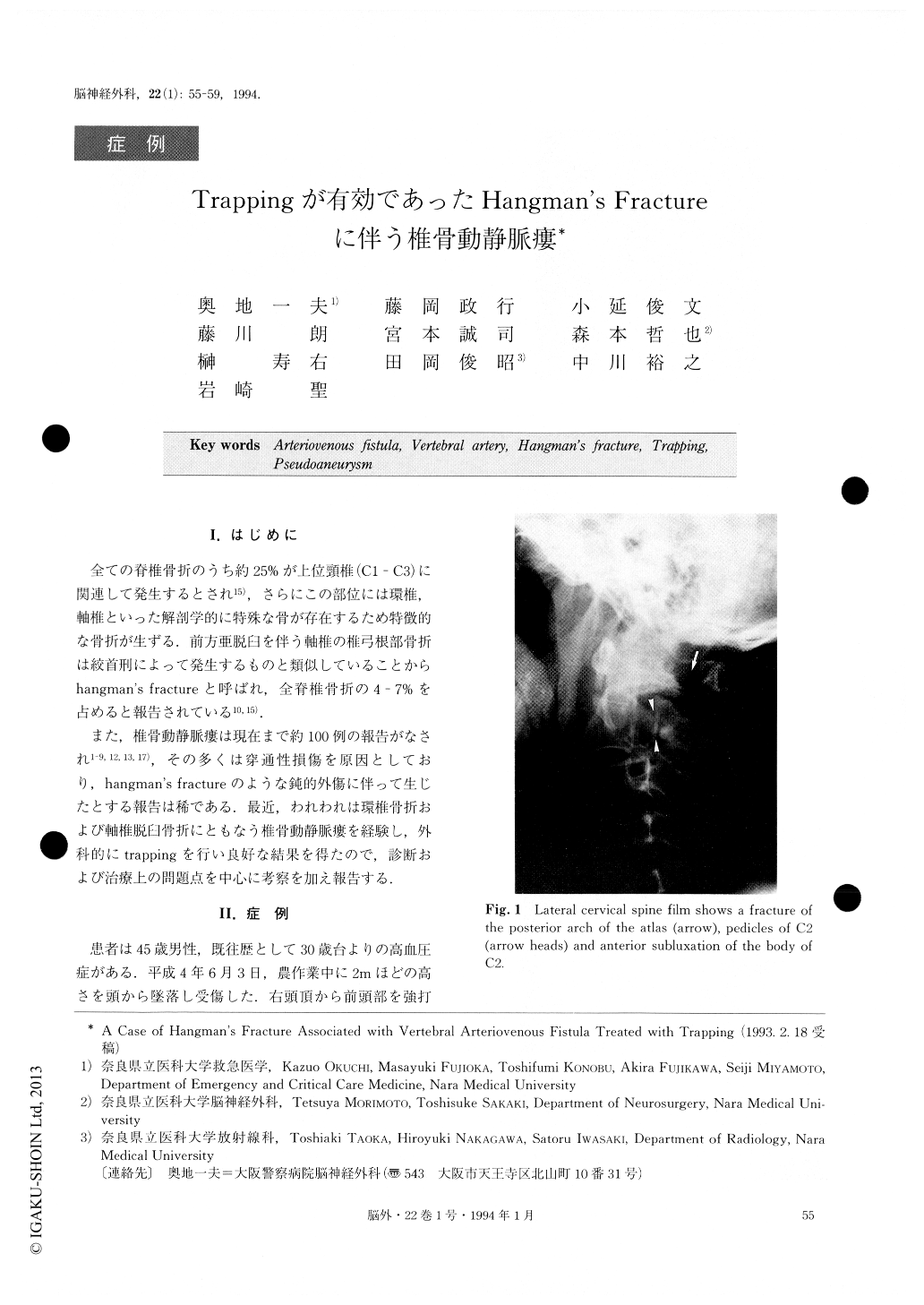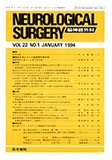Japanese
English
- 有料閲覧
- Abstract 文献概要
- 1ページ目 Look Inside
I.はじめに
全ての脊椎骨折のうち約25%が上位頸椎(C1—C3)に関連して発生するとされ15),さらにこの部位には環椎,軸椎といった解剖学的に特殊な骨が存在するため特徴的な骨折が生ずる.前方亜脱臼を伴う軸椎の椎弓根部骨折は絞首刑によって発生するものと類似していることからhangman's fractureと呼ばれ,全脊椎骨折の4-7%を占めると報告されている10,15).
また,椎骨動静脈瘻は現在まで約100例の報告がなされ1-9,12,13,17),その多くは穿通性損傷を原因としており,hangman's fractureのような鈍的外傷に伴って生じたとする報告は稀である.最近,われわれは環椎骨折および軸椎脱臼骨折にともなう椎骨動静脈瘻を経験し,外科的にtrappingを行い良好な結果を得たので,診断および治療上の問題点を中心に考察を加え報告する.
A case of a traumatic vertebral arteriovenous fistula associated with a hangman's fracture is reported. A 45-year-old male fell down about 2 meters and struck his paiqetooccipital region against the ground. Profuse nasal bleeding developed. He was transferred to a local hospit-al, where his respiration was ataxic and blood pressure was low. After intubation, he was transferred to our emergency department. Cervical x-p revealed fracture of C1, C2 and subluxation of C2 body. Because of uncon-trollable nasal bleeding, the bilateral maxillar arteries were embolized with spongel. At this time, right verte-bral angiograms demonstrated a vertebral arteriovenous fistula with an pseudoaneurysm located at C2 level. On the 13th hospital day, direct balloon occlusion of the fis-tula was attempted; this could not be achieved because the subclavian and vertebral arteries were tortuous and the balloon catheter could not be introduced to the level of the fistula in the vertebral artery. The patient was only observed until follow-up angiogram on the 24th hos-pital day revealed enlargement of the pseudoaneurysm.We performed trapping of both the proximal and distal ends of the involved vertebral artery; from C5 to Cl. Postoperative course was uneventful, hangman's fracture was fixed with a Halo vest. Four months after operation, fistula and pseudoaneurysm were not opacified on angio-gram.
We believe that transvascular techniques are the treat-ment of choice for vertebral arteriovenous fistulas. However, as the next best thing, we can use trapping for the patient whose vessels are too tortuous to introduce the balloon catheter to the involved vessel.

Copyright © 1994, Igaku-Shoin Ltd. All rights reserved.


